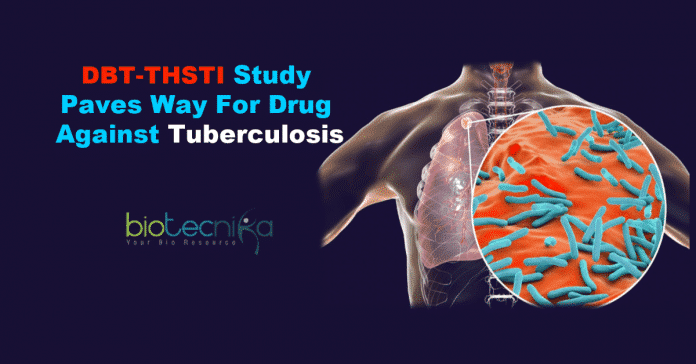DBT-THSTI study paves way for a drug against Tuberculosis
As scientists ventured out to search for efficient medications for both drug-susceptible as well as drug-resistant Mycobacterium tuberculosis, they cracked open what is
Pandora’s box of Mtb system. The search engine resulted in the accumulation of knowledge about Mtb physiology, biochemistry, and genetics.
The discovery of toxin-antitoxin (TA) systems was one of the results (a rather significant one!). It happened thirty years earlier. The Mtb has 80 toxin-antitoxin systems, with 30 of them functional.
The tale of TA systems is still being composed as it is inherent to clinical research study, specifically given that it is a potential target for drugs against tuberculosis. The Tuberculosis laboratory of the Department of Biotechnology’s Translational Health Science and Technology Institute (DBT-THSTI) led by Dr. Ramandeep Singh is writing the section on the VapBC toxin-antitoxin system of Mtb.
The toxin-antitoxin systems are small genetic elements that are made up of an antitoxin and stable toxin that counteracts the activity of the toxin. They are commonly dispersed in prokaryotes in numerous copies as well as have been shown to contribute to stress adaptation, pathogenesis, persistent, or biofilm for
mation. The antitoxin can either be an RNA or protein whereas the toxins are invariably translated into a protein.Based on the nature of antitoxin and the mechanism by which antitoxin negates toxin activity, the toxin-antitoxin modules have been categorized into 6 various types. In one of the most well-characterized family – the type II toxin-antitoxin systems, the antitoxin negates the activity of the cognate toxin by forming a tight complex via direct interactions. The type II TA systems’ antitoxins have inherently disordered regions, that makes them susceptible to cleavage by cellular proteases. This proteolytic deterioration results in the release of toxin that subsequently hinders various cellular processes such as DNA replication, cellular division, transcription, translation, and cell wall surface synthesis.
In species belonging to the Mycobacterium tuberculosis complex, the preservation of these toxin-antitoxin systems suggests that they control the metabolic pathways that are essential for bacterial pathogenesis. Primarily, the Mycobacterium tuberculosis systems belong to kind II toxin-antitoxin systems such as VapBC, MazEF, HigBA, RelBE, and ParDE.
The group at DBT-THSTI have discovered that regulation of the VapBC22 toxin-antitoxin system is necessary for Mycobacterium tuberculosis to develop an infection in the host. This means that compounds that could target VapC22 might be good prospects for treatment against both drug-susceptible and drug-resistant M. tuberculosis. In prokaryotes, the virulence-associated protein B and C toxin-antitoxin systems are widespread. The team delineated the functions of the VapBC22 toxin-antitoxin system of M. tuberculosis, filling up the gap in comprehending the function of these systems in physiology.
DBT-THSTI study paves way for a drug against Tuberculosis
Author: Sruthi S






























